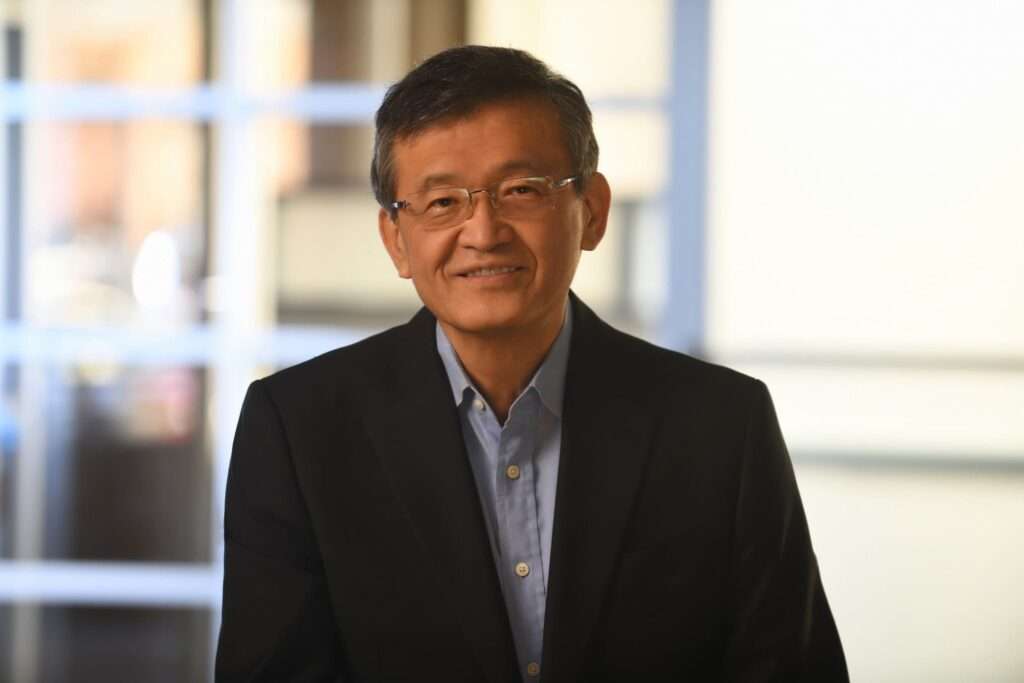Intel has named and outlined the roadmap for its next chapter. Its CEO since March 2025, Lip-Bu Tan, has been repeating the same mantra for months in both internal and public forums: fewer layers, more engineering; less bureaucracy, more silicon. After years of losses, process delays, and a series of decisions that undermined its leadership, the executive has chosen to rebuild Intel around two core axes: artificial intelligence (from PCs to data centers) and third-party foundry business (IFS). The move comes after the departure of Pat Gelsinger at the end of 2024 and in an unprecedented political context: the U.S. government has acquired nearly 10% of the company’s capital in 2025 to bolster its industrial strategy.
The diagnosis: too many layers, little focus
Tan has been clear about the diagnosis: “too many management layers” and complacency in a market that moves at a dizzying pace. In his first weeks, flattened the structure and made technical leaders report directly to the top across the main divisions (PC, data centers, networks, and GPU), strengthened R&D, and elevated AI as a cross-cutting product lever. The mandate is clear: shorten the cycle between design and manufacturing, restore execution discipline, and focus investment where Intel can differentiate itself.
The plan: AI everywhere and foundry as a business
AI is not a product; it is a horizontal layer. On the PC side, the focus is on integrated accelerators and tools that bring local models and agents to the desktop. In the data center, the emphasis is on CPU + accelerators and platforms for generative AI workloads, with alliances and efforts to regain relevance against current leaders. Above all, IFS: turning Intel into a competitive foundry for external clients—with advanced nodes, US-based capacity, and reliability— is now a strategic goal and, practically, a lifeline to fill factories and amortize investments.
The context explaining the urgency
Over the past decade, AMD narrowed the gap (and surpassed Intel in several key metrics) with its Ryzen processors and chiplet architecture, while NVIDIA capitalized on the AI boom in the accelerator space. Added to this competitive pressure were process delays (failed or slower-than-expected node transitions), irregular GPU execution (Arc), and a foundry business still far from scale. The outcome: losses, adjustment plans, and a perception of disadvantage in the league that now determines value: AI.
Politics and industry: a 10% stake as a symbol
The other notable development is political and financial: The U.S. government has become one of Intel’s largest shareholders with nearly a 10% stake (non-voting, according to various reports), after converting previous aid and incentives into equity. Marketed as a state-backed stake in chip sovereignty and the country’s reindustrialization, this move provides explicit support to Tan’s strategy—AI + foundry—and raises questions about governance and future influence.
Internal changes (and what must remain unchanged)
- More influence for engineers. The management hierarchy is flattened and technical leaders gain weight in decision-making.
- IFS as a real P&L. The foundry operates with its own accounts and goals to track client traction and operational discipline.
- AI integrated into every roadmap. From PCs to networks and software, with a clear technology and AI leadership.
- Capital discipline. Prioritizing nodes and products that understand their economic advantage (returns, costs, clients), avoiding dispersal.
At the same time, a non-negotiable remains: maintaining credibility with clients. Regaining it requires meeting process deadlines, volumes, and quality; no marketing campaign can replace a wafer on time.
Risks and signals to monitor
- Node timetable (Intel 3/20A/18A and beyond): performance, costs, and actual capacity.
- IFS portfolio: who (and in which node) is contracting foundry services; whether there are external reference designs (CPU/SoC/AI); and anchor clients.
- AI execution: products that arrive on time with software and ecosystem; coherent alliances.
- Governance: how operational independence will be secured with government involvement (even without voting rights) amid a volatile geopolitical environment.
- Talent: whether the flattening retains and attracts architects and product leaders, or if, on the other hand, it erodes key teams.
What does this mean for the sector?
If Intel manages to get technology back on track and make IFS a reliable business, it changes the game. TSMC and Samsung would gain a competitor in a third Western hub with advanced capacity, something that fabless clients have been requesting for years. In AI, a compliant Intel compels budget sharing and reduces dependence on a single accelerators supplier. Failing this, the risk is to double down on errors: high capex without scale and a loss of focus that prolongs the journey.
Final take
Lip-Bu Tan has brought clarity and structure to what Intel needed: to become once again an engineering company. The combined approach of flattening, prioritizing, and injecting AI into everything is the most coherent plan he could present. The rest depends on lithography machines, yield tables, tape-out sheets, and client deliveries. And on those, there are no narratives: either the wafer arrives, or it does not.

